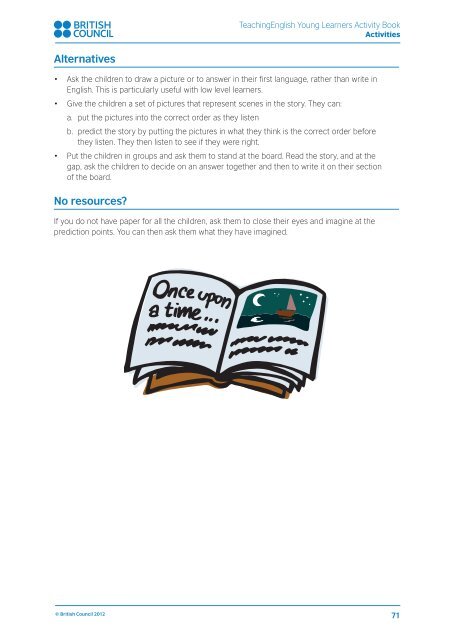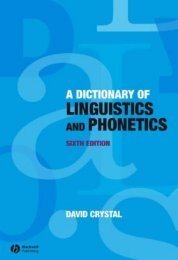url?sa=t&source=web&cd=3&ved=0CC0QFjAC&url=http://www.teachingenglish.org.uk/sites/teacheng/files/B369-Young-Learners-Activity-Book_v10
url?sa=t&source=web&cd=3&ved=0CC0QFjAC&url=http://www.teachingenglish.org.uk/sites/teacheng/files/B369-Young-Learners-Activity-Book_v10
url?sa=t&source=web&cd=3&ved=0CC0QFjAC&url=http://www.teachingenglish.org.uk/sites/teacheng/files/B369-Young-Learners-Activity-Book_v10
You also want an ePaper? Increase the reach of your titles
YUMPU automatically turns print PDFs into web optimized ePapers that Google loves.
TeachingEnglish <strong>Young</strong> <strong>Learners</strong> <strong>Activity</strong> <strong>Book</strong><br />
Activities<br />
Alternatives<br />
• Ask the children to draw a picture or to answer in their first language, rather than write in<br />
English. This is particularly useful with low level learners.<br />
• Give the children a set of pictures that represent scenes in the story. They can:<br />
a. put the pictures into the correct order as they listen<br />
b. predict the story by putting the pictures in what they think is the correct order before<br />
they listen. They then listen to see if they were right.<br />
• Put the children in groups and ask them to stand at the board. Read the story, and at the<br />
gap, ask the children to decide on an answer together and then to write it on their section<br />
of the board.<br />
No resources?<br />
If you do not have paper for all the children, ask them to close their eyes and imagine at the<br />
prediction points. You can then ask them what they have imagined.<br />
© British Council 2012<br />
71





